Detraining Dichotomy
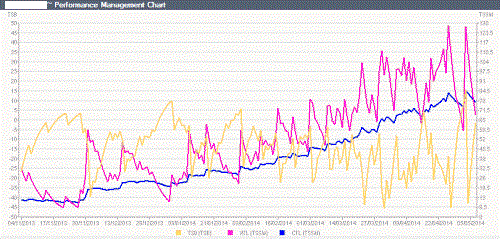
Performance Chart from Grand Masters Cyclist
Rusty Ross ~ Alabama USA
A textbook example of how to get and keep fitness
Fitness is an ethereal entity. We are either getting fit, are fit, or losing fitness. Fitness is like a dog off a lead; the more you chase it the further away it gets and the more tired you become. Don't chase it, keep calm and let it come to you.
You cannot "peak" for a season. We need to build up slowly, create a few "consolidation plateaus" on the way, ramp it up when we need to peak, taper, peak, then come down to a previous consolidation plateau. How hard can it be?
Get it right and you have a fantastic feeling; get it wrong and sub-optimal performance and satisfaction are the order of the day. And that's the polite way of putting it.
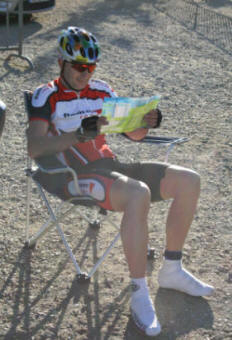 Rest is Good
Rest is Good
One of the biggest dilemmas I have with many riders, is convincing
them that a rested athlete is a performing athlete. Fitness
and rest are like the seats on a see-saw, They both can't be up at
the same time.
Generally, we are not pro's (although there are a few on our subscribers list), we are weekend warriors. We train, we work, we race.
For pro's, substitute "work" with "rest" and you'll begin to understand where our problems arise.
If we don't plan our rest, our rest will be allocated to us. It will come at a time that's most inconvenient to us and partaking in it will not be a decision of our making.
When we allocate recovery, adaptation, or consolidation weeks, many athletes worry about losing their fitness. Well if you don't factor in a regular and scheduled rest period, you'll lose it anyway.
A quick read through this will let you know what's happening when, why, and how to get it back when you need to.
Alternatively, at various points of the year we may succumb to sickness from the masses; be forced to have a holiday with the family (just as your peak objectives homes in to view); or suffer an injury of one sort or another that keeps us off the bike.
Here's a timeline of how you are affected by this hiatus du velo...
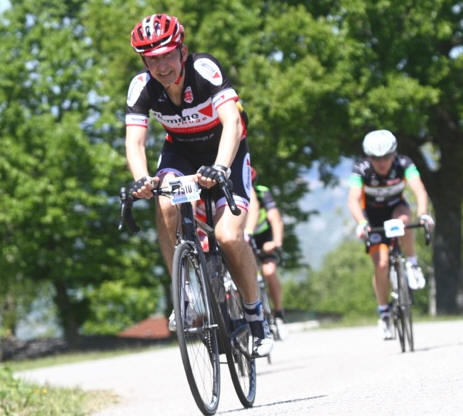
A peak fitness James Falshaw at the Nove Colli
Apples & Oranges
Fitness is measured by many things and you need to know what you are
gaining, protecting or losing when you try to define the word
fitness.
We have cardio fitness, muscular fitness, speed, strength, power, mental, the list, like me, could go on and on. Fitness is not one specific thing, it's a cumulation of all those listed, and many, many more.
Some facets are gained, and lost, quicker than others. We need to make sure we're comparing like for like, and after our hiatus, we need to work on the areas we've lost, not the areas on which we had previously worked to get ourselves fit.
Returning from a mid-season injury or lay off, depending on the time out, requires a different training programme than starting from scratch to build fitness after our controlled winter lay-off.
Periodisation really comes in to its own when returning from an injury or illness, depending on the time off the bike.
The
Final Countdown...
Today, we will stop riding our bike. The reason why, matters
not, but tomorrow we will not ride; here's our body's journey.
Day One
 How
good is this? A lie in! So you get up a little later and
still wolf down your normal "racers breakfast". Whoa! Hold on
there. Let's nip this in the bud.
How
good is this? A lie in! So you get up a little later and
still wolf down your normal "racers breakfast". Whoa! Hold on
there. Let's nip this in the bud.
I'm not going to go in to it here. But eat less (of everything) and adjust your carbs down; protein, fruit and veg up; and drop your calorific intake.
Day Two
Okay, the novelty has worn off now and you're beginning to get
bored. Remember that when it comes to snacking. You're
not hungry, you're bored. Find something constructive to do.
 Day Three
Day Three
If you've been going well
up until your "stopping point" (tracked by the pink line), on day
three you might
actually be going and feeling better overall than you were on the
day you stopped.
Yes you will have lost a tiny percentage of fitness (blue line in the charts), but you will be better rested and your fatigue profile will be lower, which results in a higher rebound of the yellow line.
When blue is high and yellow is high, all is good. You can see that most clearly at the central point of this chunk of above's fitness chart.
A taper, is nothing more than a controlled "de-training".
The objective of a taper (amongst other things) is to repair muscle fibres, replenish glycogen stores, allow metabolic changes and adaptation to occur and to refresh the body, mind and soul.
Tapers require a drop in volume and a maintenance of intensity, so don't confuse taper with total rest! This is mrs flamme rouge resting...

Week One
By the end of the
first week, your body begins to s-l-o-w-l-y lose the benefits it accrued from
your previous training activities.
 Plasma volume
begins to reduce and affect performance. This happens because it's the blood
that transports the oxygen around your body to power the muscles.
Plasma volume
begins to reduce and affect performance. This happens because it's the blood
that transports the oxygen around your body to power the muscles.
If the muscles make the same high power demands as before, a decreased blood (oxygen carrying) volume will require a faster heart beat to deliver the same performance. If you train to heart rate, you'll go slower!
Glycogen stores in the muscles are used at a faster rate than previous, as your body finds it harder to get the glucose it needs from the bloodstream. This has a knock-on effect as the muscles become less efficient at "refilling" their glycogen stores post-exercise.
Lactate tolerance is also reduced, as a by-product of the reduced oxygen levels in the blood. Everything just seems harder than it should. But it can be brought back quickly with the right training regimen.
Weeks Two to Three
After two weeks,
our VO2max starts to take a measurable hit. We've covered this
extensively in other areas,
but VO2max, is effectively, maximal oxygen uptake and is made up of
many paramaters.
Although the earlier dropping plasma levels start this downward trend, it accelerates, from day eight onwards, as the left hand ventricles of the heart (a cardiac muscle) begin to decrease in size and volume.
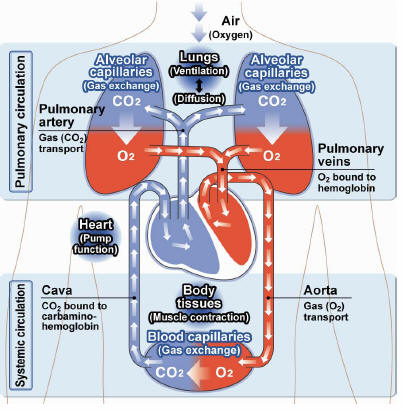
As if that wasn't enough, our respiratory system takes sympathy with the cardio system and begins to degrade by up to 10%. This can easily be measured (and it is when riders come for a Performance Evaluation) with a few lab based monitors and tests.
Another factor that changes, which you won't be able to "sense", is the change in your respiratory exchange ratio.
By measuring the ratio between consumed oxygen and exhaled carbon dioxide, we can track the use of our macro nutrients as fuel. During "detraining" there is a shift in the fat/carbohydrate fuelling ratio. Carb burning increases significantly, compared to fat utilization, which ain't good for endurance athletes!
Glucose uptake is also decreased which, coupled with the above, makes a bad situation worse. Not only do you use more glucose, you make inefficient use of what you have, which requires more carbs to fuel less effort. How upsetting is that?
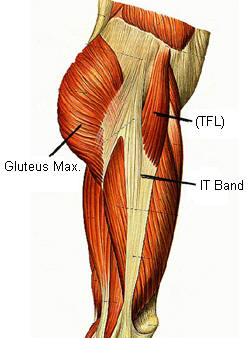 Moving
in to month two...
Moving
in to month two...
Muscular degradation occurs in
the form of a triple whammy; decreased muscle capillaries, reduced
mitochondria density and the breakdown of aerobic oxidative enzymes
within the mitochondria.
Again, not only do you have less of these micro powerhouses, the ones you do have are less effective.
Muscular atrophy will (obviously) occur due to the use it or lose it principle.
Loss of muscle definition is quite easy to see, but what you can't see is what's happening inside the muscle itself. You are also more than likely to "suffer" a change in slow/fast twitch muscle ratios.
So if you're a sprinter, you've got work to do!

It's not all bad...
Okay, before you go and cancel the family holiday, it's not nearly
as bad as it all looks.
As I hammer home constantly, Rule 1 of my Slackers Charter states a rested athlete is a fit/happy/fast athlete.
Whilst all these physiological atrophy's are taking place and frightening the life out of you all, the rest of your body, mind and soul are in ecstatic delight as you've stopped hammering the life out of yourself on a weekly basis. Your body can now adapt and repair.
A two week holiday with the family, as long as you keep an eye on your weight, can actually do you more good than harm. You might lose five percent of your fitness, but you'll gain ten percent freshness.
Meanwhile, back home, everyone else is smashing themselves daft,
getting two percent fitter and ten percent more tired. Guess
who's going to be going well in three weeks time? It probably
ain't them!
The Come Back

EFR Road
Captain Mick Heald on a good day.
Some of our sessions are full on; make sure you're ready.
Everything in moderation. When you do come back from "off-time" don't try to make up your two week deficit in two training sessions.
Get in an "endurance level" session of around an hour to ninety minutes. See how you feel after that, then ramp it up accordingly.
If you are using one of our programmes, go back to your last session and do a Grey Week variation of it. Again, once you have a baseline, adjust your volume, levels and intensity as appropriate.
If you don't have one of our programmes, we have a free Re-Hab Programme that you can try. Just fire me an email (click the envelope icon above the right hand menu), and I'll send you one.

The Message
Injury and fatigue will stop you training; so will planned
recovery. One is infinitely better than the other two.
Continuous high level training will lead to "over training" or more likely, "unexplained under performance syndrome". Yep, it's a real thing.
Athletes at our level, when approaching peak fitness, will benefit as much from a rest, or a change, as banging out another VO2max session. The fitter you get, the harder you have to train to get fitter. It becomes an Icarus-like self fulfilling prophecy that you will crash and burn.
Taking a break is not the end of the world. Depending on timescales, anything around two weeks can easily be brought back with a few tailored sessions.
So don't be scared, don't make the family feel guilty for wanting a holiday, and (if you're a male reader) don't fret if you catch man-flu, or as our female readers call it, a slight cold. It's nature's way of telling you to slow down for a bit.
Suffer well, recover better...








